Long Reads
All About Coffee Cake (and a Recipe for Buttermilk-Streusel Coffee Cake)
We should all have a solid command of the ABCs of baking. Thankfully, Food52's Test Kitchen Manager Erin McDowell is here, with tips and tricks to help you master the most essential desserts and the simplest breads.
Today: Even if we can't all agree on what coffee cake is, we can all agree that it's delicious.
When it comes to baking, I’m always surprised at the controversy surrounding coffee cake. It's often due to regional variety and fierce loyalty to personal history. All in all, coffee cake is a subject less about science and more about options and preferences. Let's start from the beginning.
A little background:
Nearly all present-day cakes (and many other sweets for that matter) originated from simple "cakes" made with a batter sweetened with honey. These cakes were typically unleavened and, over time, bakers began to experiment with additional ingredients, shapes, leavening techniques, and so on. A variety of cakes emerged regionally, including a Danish cake flavored with coffee that was often served between meals and accompanied by coffee or tea. It's believed that the name coffee cake originates from the addition of coffee as a flavoring agent rather than the suggestion to serve it at coffee hour. The popular German cake streuselkuchen, a simple cake topped with a hefty amount of buttery, spiced streusel (and made with no coffee whatsoever), was another variation of this. In Hungary, they had aranygaluska, made much like monkey bread: balls of dough rolled in sugar and nuts and layered into a baking pan with dried fruit.
All of these early coffee cakes had one other very important thing in common: yeast. But as time went on, the advent of chemical leaveners produced a new array of products: It was now possible to make many of the same recipes in less time while preserving the light and airy results and -- importantly -- eliminating the yeasty flavor.
This is where today’s central coffee cake controversy stems from: yeast or no yeast? There is no wrong or right answer -- it’s just a matter of the recipe (and personal preference). Very traditional recipes (from older cookbooks, or passed down from family members) are likely to contain yeast, while newer recipes do not. By the late 1800s, Americans had created countless recipes for coffee cake, most of which didn’t contain coffee for flavoring and instead combined components of many of their European cake predecessors: Some were swirled with filling, some were topped with crumb topping or streusel (thus the emergence of closely related coffee cake cousin, crumb cake), and many boasted a combination.
More: To make things more confusing, this Prune Coffee Cake is, indeed, coffee-flavored.
All shapes and sizes:
Since there are so many variations and versions, coffee cake can come in many forms. Recipes rooted in the Danish, Dutch, and German traditions are often baked in loaf or Bundt pans, while American recipes opt for simpler square or rectangular baking pans or traditional cake rounds.
My advice is to consider your end result: If you want a swirl in the center, or layered fillings, you may go for something more dramatic like a Bundt. If you want lots of topping and no fillings, maybe a loaf is the shape for you. If you plan on drizzling the cake with icing, a square or rectangular pan will give you the most surface area. Refer to specific recipes, or tweak your own to fit whichever pan you desire.
Ingredients galore:
Coffee cakes can have almost anything in them. Most versions contain butter, mainly for flavoring purposes, but some versions may contain oil or shortening. A sweetener is a must, and it can be granulated, light brown, or dark brown sugar, or it can even be a liquid like honey. Since the cake contains significant sweetness in the form of other ingredients (jam, streusel, or sweet inclusions like chocolate), many cake batters are easy on the sugar. Eggs are common -- these are rich cakes. Any combination of dairy products like milk, cream, sour cream, or buttermilk can be added to achieve a smoother batter. Yeast, baking soda, or baking powder can be used as leavening agents. In general, the result is a simple cake with a mild flavor, as the majority of the cake's personality comes from inclusions, toppings, fillings, and/or icings.
More: This Vegan Crumble Coffee Cake uses neither eggs nor butter.
Fillings and toppings and icings, oh my!
While traditional coffee cakes once kept things relatively simple, modern coffee cakes have myriad options for fillings, toppings, and finishes. After testing a few recipes, I will admit that I’m torn: I am likely to keep a variety of coffee cakes in my repertoire (including, but not limited to, the one featured in this article). Think of coffee cake as an opportunity for you to flex your creative muscles: It's an infinitely adaptable (not to mention super easy) breakfast/brunch/snacktime staple.
Perhaps the best way to think what type of coffee cake to make is not by recipe, but rather by the season and the ingredients in your pantry. If you have a standard cake batter base (yeasted or not), you can switch up your coffee cake as you please. In the summer, mix in fresh berries or layer peach slices in the center. Come autumn, place apple slices across the top. In winter, add lots of citrus zest. I love a version where I swirl jam through the coffee cake and finish it with only a small amount of crumb topping. I am not entirely fond of adding chocolate to my coffee cakes, but a chocolate-flecked version was gobbled up pretty quickly at a recent brunch. And while I’ve determined that coffee cake is my favorite vessel for lots and lots of streusel, I’m also an advocate for drizzling these cakes with copious amounts of icing. My favorite icing is super simple: 1 cup of confectioners' sugar, the juice and zest of 1 orange, and then a few tablespoons of heavy cream, as needed, to obtain a runny consistency.
Master the "method":
Nearly all coffee cakes are simply mixed by hand using what is commonly known as the “blending method”: Mix the dry ingredients together, mix the wet ingredients together, then mix everything together. The simplicity of the method is what lends these cakes to so many variations.
Real streusel talk:
There are so many methods, ingredients, and types of streusel. While they are all delicious (I mean, come on -- we’re mixing butter, sugar, flour, spices, sometimes nuts, and other add-ins -- there’s no way it could be bad), I really love one method in particular. I’ve found that I get the best crumb texture (and good size variance) by taking a cold stick of butter, microwaving it for 10 seconds, then cutting it into my sugar/flour/spice mixture. The butter is cold enough that it doesn’t get too soft while you mix it (I like to use my hands), but it’s soft enough that it easily mixes in and binds together to make some bigger crumbs.
To reheat is neat:
One of my favorite things about coffee cake is that most versions freeze really well. Many factors contribute to favorable freezing: These cakes have so many enrichments, they're very moist, and they're commonly served warm. Bake a coffee cake, eat it to your heart’s content, storing it tightly wrapped in plastic wrap for 2 to 3 days. Then slice the remaining cake and wrap each slice in plastic wrap and in a layer of foil. (Personal word to the wise: Label it. Sure, you remember now, but in a month you’ll be looking in your freezer thinking: “What are all these tiny packets of stuff floating around?”) When you get a surprise visitor, or you're in need of a little pick-me-up, unwrap a slice, and warm it in the microwave for a few minutes. The cake will be almost as good as new.
Buttermilk-Streusel Coffee Cake
Makes one 9-inch bundt cake
For the streusel:
2/3 cup sugar
2/3 cup brown sugar
2/3 cup all-purpose flour
1 1/2 tablespoons cinnamon
1/4 teaspoon freshly grated nutmeg
1/2 teaspoon ground cloves
Pinch salt
8 tablespoons (1 stick) unsalted butter, microwaved for 10 seconds
For the cake:
3 cups all-purpose flour
1 tablespoon baking powder
1 teaspoon baking soda
1/2 teaspoon salt
3 eggs
1 1/4 cups buttermilk
3/4 cup sugar
8 tablespoons (1 stick) unsalted butter, melted
See the whole recipe (and save and print it) here.
First 2 photos by Mark Weinberg; middle photo by James Ransom; last 4 photos by Erin McDowell
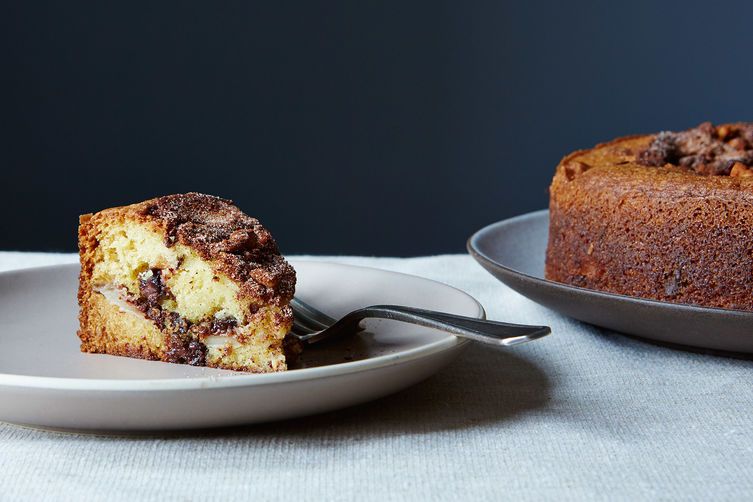
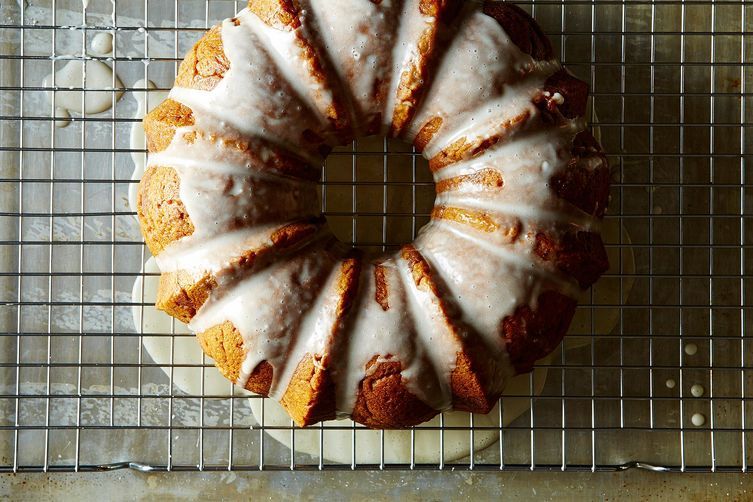
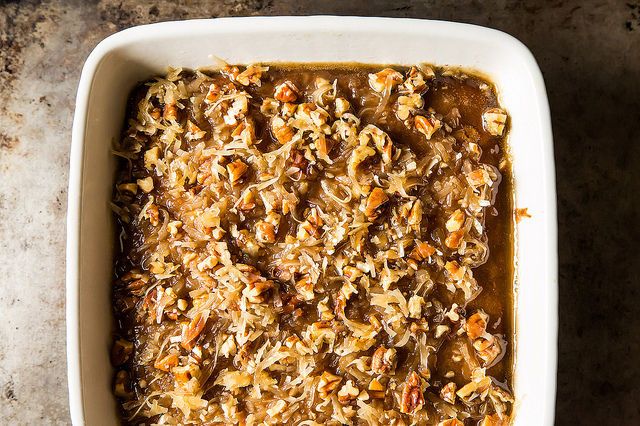
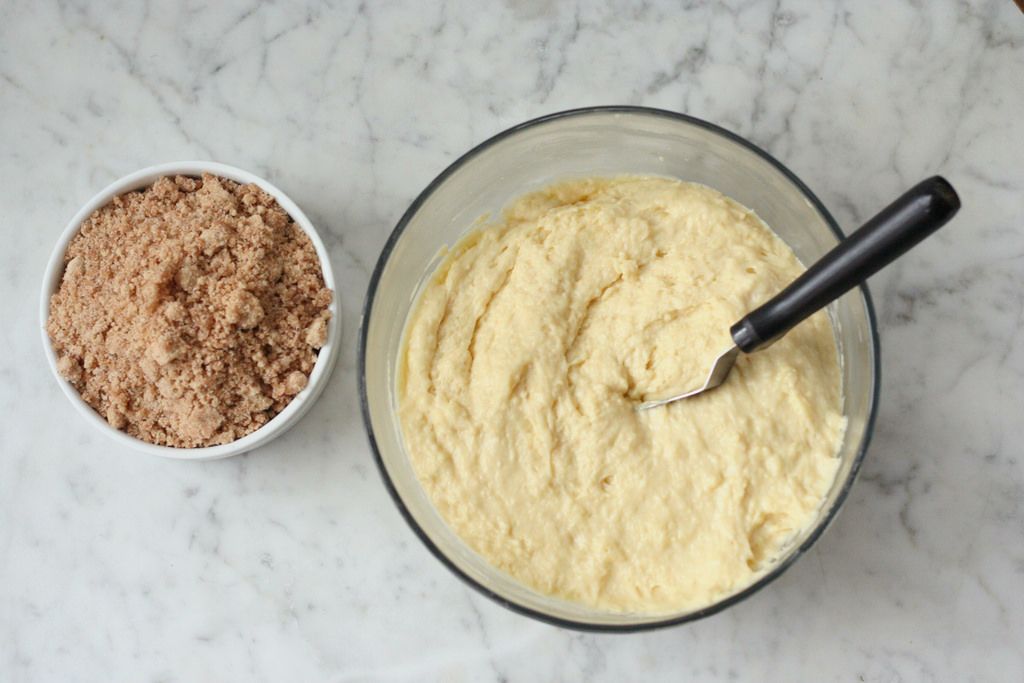
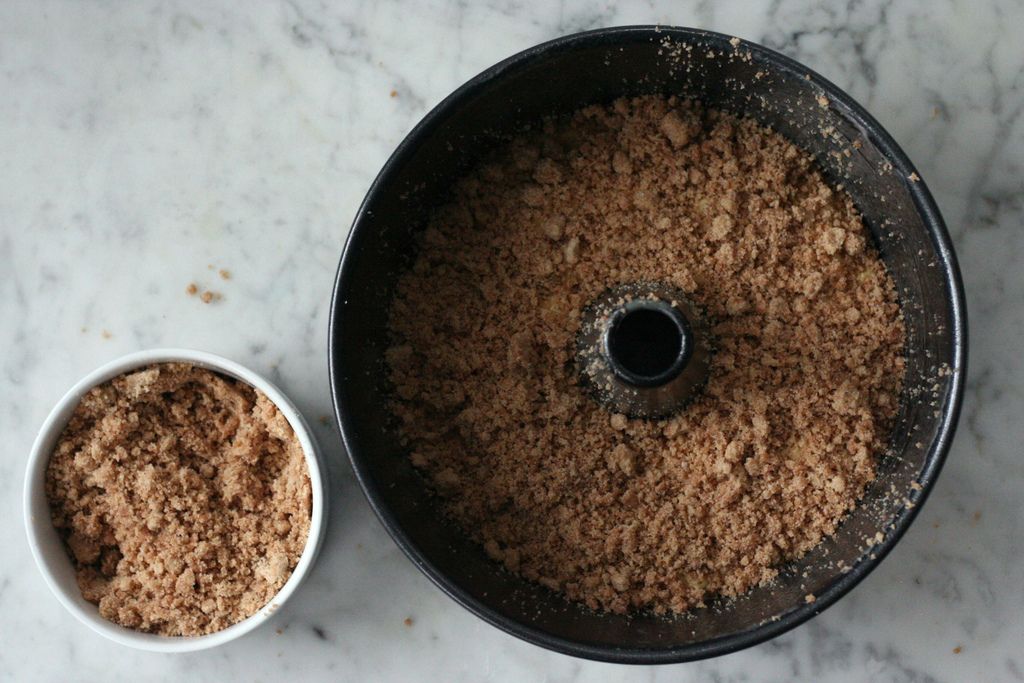
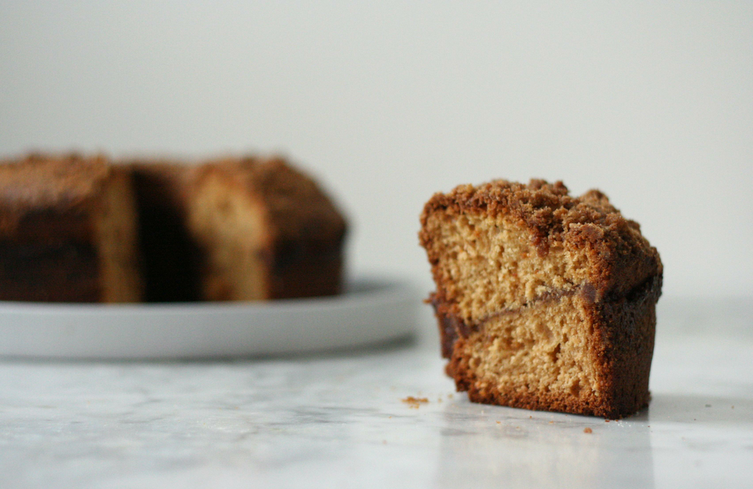

See what other Food52 readers are saying.